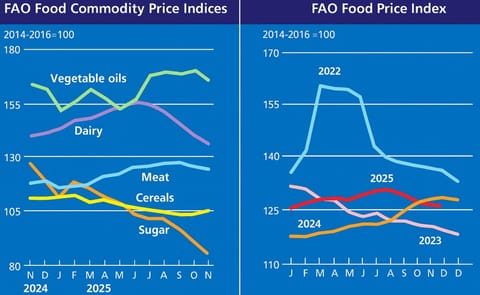As the restaurant industry struggles to entice more consumer visits, consumer attitudes and behaviors are shifting.
Heading into the New Year, Bonnie Riggs, restaurant industry analyst at The NPD Group, a leading global information company, advises foodservice operators and manufacturers to put a strong effort into understanding what their consumers are looking for when they dine out.
According to NPD’s ongoing foodservice market research, restaurant industry traffic will remain flat through December, and the forecast for 2015 — buoyed by improved consumer confidence and positive economic indicators — will increase by one percent.
“The world and foodservice-related enterprises like restaurants, manufacturers, and food retailers are changing at an ever-increasing pace,” says Riggs. “But just as much as many things change, the fundamental business principle of knowing your customer and keeping them happy remains the same. In this fast-paced world, consumer must-haves and wants change steadily and operators and their suppliers must stay in tune with these changes in order to drive their businesses forward.”
Convenience, value, unique menu items, and service remain high on the list of foodservice consumers’ must-haves and wants and that won’t change in 2015, but how consumers define these are continually changing, she says. For example, convenience is generally about portability, time-savings, and order accuracy, but the recent unprecedented technology revolution has raised the bar in all these areas. Online marketing is no longer a nice-to-have for operators, it’s a necessity. The New Year will bring an increased proliferation of mobile apps for ordering and payment, and other technologies that enable greater convenience for restaurant customers.
Value is another area that has been redefined by consumers. The key for any operator is to increase average check by providing more value to the consumer. Food quality remains the most important value driver when choosing restaurants and should be viewed as a cost of entry. Riggs explains that in 2015 operators must go further and offer more choices, like portion size, right price; deliver on customization and fresh ingredients; different preparation styles, and there should be more focus on quality.
Other areas Riggs suggests operators focus on in 2015 are:
Unique Menu Offerings and Flavor Profiles
Next year there will be increased attention on offering more unique menu items and new twists on old favorites, while at the same time retaining customer favorites. Operators should seek to:
- Spice it up with different flavor profiles
- Use bolder flavors
- Introduce multi-cultural influences
- Try new twists on comfort foods
- Increase focus on protein offerings beyond traditional menu items
- Offer vegetarian options
- Emphasize natural and fresh
- Increase availability of portions for sharing
- Provide greater variety
Service
Now more than ever, consumers expect restaurant operators to deliver added value by focusing on their specific needs. Looking forward, restaurant operators must address the needs of multiple consumer groups:
- Single diners – With more people choosing to dine out alone, understand what they are looking for: a table out of the way, a seat at the bar, social experience (conversation or left alone), and Wi-Fi.
- Families with kids – It’s key to increase appropriately-priced menu offerings, offer a kid-friendly environment, and broaden your kids’ menu offerings. This may require seating and menu changes.
- Millennials – These young consumers have different needs and higher expectations than their older counterparts. To remain relevant, marketers will need to invest money and resources in connection technologies that appeal to this group.
- Boomers and seniors – These diners desire a welcoming environment, more lighting, less noise, easy-to-read menus, comfortable seating, and personal attention. QSR operators need to pay attention to their in-store environment, since this group tends to eat more often in the restaurant rather than using take-out or drive- through, compared to other generational groups.
“A changing, complex marketplace sometimes requires peeling back the layers and revisiting the basics,” says Riggs. “The New Year surely will bring more changes, but if operators go back to the basics of understanding and focusing on customers, it will be a more successful and prosperous year.”












